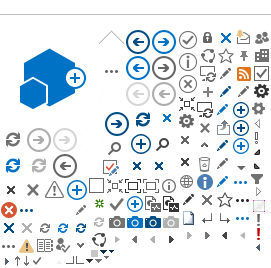Name of Group | 2.06 Telerobotics Working Group |
Area | Mission Operations and Information Management Services Area (MOIMS) |
Chairperson | David Mittman |
Chairperson E-Mail Address | david.s.mittman@jpl.nasa.gov |
Chairperson Agency | NASA |
Deputy Chairperson | |
Deputy Chairperson E-Mail Address | |
Deputy Chairperson Agency | |
Mailing List | moims-tel@mailman.ccsds.org |
Scope of Activity | The working group will adopt, adapt or develop an interoperability standard that will be applicable to the widest possible cross-section of the telerobotics technology development and operations community. The working group will develop a specification for the compatibility layer that will permit operators and robotic agents to freely exchange information, enabling the operators to communicate with heterogeneous robots in a uniform fashion.
We will where appropriate, adopt the best of the existing telerobotic standards, adapt them for use in space, and develop new standards where needed to meet space exploration requirements.
We anticipate the need to develop a new standard in the areas of safe telerobotic and human-robot operations in the presence of disruption prone and time delayed communications links, as well as a standard that facilitates the integration of and operation of multi-sourced robotics exploration systems. Where appropriate, we will build the new standard upon the base of existing applicable CCSDS standards and we will also engage the standards community in extending the existing standards in the areas where current capability is not sufficient to support the needs of robust telerobotic collaboration. |
Rationale for Activity | The proposed Telerobotics Working Group recognizes that the development of the component technologies required to extend human and robotic presence and capability into space is accelerating rapidly, and that there are emerging requirements for interoperability and cross-support between international civil space agencies. A common framework for telerobotics operations would allow for diverse robotic assets to collaborate on mission goals and realize cost savings from the cross-support provided by the participating agencies.
International collaboration for exploration beyond earth orbit is a policy shared by many space agencies. ESA, NASA, JAXA, CSA and other agencies have identified a wide range of international partnership opportunities for exploration, including robotic precursors, human-robotic assistants, crew mobility, long duration robotics servicing, and payload offloading. While the goals of exploration, destinations, and timelines for exploration may continue to shift, the connections between Agencies remain an important part of how we will explore space. We will explore not with human or robotics missions, but with humans and robotics in partnership. Exploration beyond earth orbit will involve an international team of humans and robots working together on earth and in space. Collaboration across the wide spectrum of telerobotics development and operations is complicated by both the diverse heritage of the component systems and the logistics of managing international teams.
Through the development of telerobotic operations standards, we can decrease the cost associated with telerobotics technology development and integration, decrease risk through earlier and more thorough testing, and decrease the cost of operations through cross-support and elimination of duplication of effort.
There is a strong international desire to collaborate on defining Telerobotic standards to reduce the life-cycle costs associated with interoperability and cross-support in space exploration.
Spaceflight is costly across the development, flight unit production, and launch and operation phases of missions. Spaceflight is also risky to both man and machine. Through collaboration, the international community can contribute to research that will reduce cost and risk. An even greater benefit is when the new technologies increase capabilities or add whole new functions that extend the possibilities of space exploration.
The savings and risk reduction obtained through the development of any component telerobotics technology is multiplied by the opportunity that interoperability offers us to directly measure and compare similar technologies without a combinatory increase in development cost. Telerobotic interoperability would allow component technologies to be tested in a rich shared environment such as the ISS testbed without the need to increase new infrastructure to support each new technology.
|
Goals | The initial goals of the Telerobotics Working Group are: a) develop a "Telerobotic Standards roadmap" Green Book. b) After agreement on the roadmap, develop a "Telerobotic Standard" blue book for the software data structures and routines that simplifies the process of communicating between multiple diverse robots and their command and control systems.
The "Telerobotic Standard" Blue Book will have three main elements:
1. Message Exchange Formats
2. Application Programming Interfaces (API's)
3. Functional Descriptions of the application services that support supervisory telerobotics over near-Earth time delay
|
Survey of Similar Standards Efforts Undertaken in
Other Bodies and elsewhere in CCSDS | Similar work is being undertaken in the following organizations: Robotics Operating System (ROS), Joint Architecture for Unmanned Systems (JAUS), ISO TC 184/SC 2 Robotics and robotics devices and others. None of these organizations deal specifically with civil space telerobotics. |
Patent Licensing Applicability for Future Standards | There are NO known patent license issues. |
Technical Risk Mitigation Strategy | Strong technical and extensive experience in telerobotics among the participating agencies ensures that the Telrobotics Working Group will be able to meet its stated goals. |
Management Risk Mitigation Strategy | Resource estimates provided by 4 agencies ensures that sufficient technical resources will be applied to the Telrobotics working group to ensure it will meet its stated goals. |


